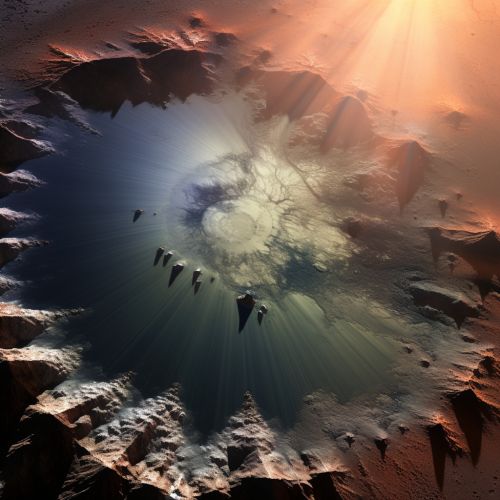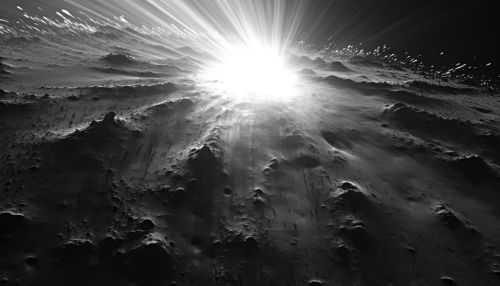Collisional Ejecta
Introduction
Collisional ejecta refers to the material that is expelled from the surface of a celestial body due to the impact of a meteorite or other impacting body. This process is a key aspect of planetary geology, contributing to the formation and evolution of planetary surfaces across the solar system.


Formation of Collisional Ejecta
The formation of collisional ejecta occurs during the impact event. When a meteorite or other impacting body strikes the surface of a planet or moon, the energy of the impact is transferred to the surface material. This energy transfer results in the expulsion of surface material, creating a spray of ejecta that can extend far from the impact site.
The amount and distribution of ejecta produced during an impact event is influenced by several factors. These include the size and velocity of the impacting body, the angle of impact, and the composition and structure of the surface material. Larger, faster impacting bodies tend to produce more ejecta, as do impacts at lower angles. Impacts into softer, less cohesive surface materials also tend to produce more ejecta.
Characteristics of Collisional Ejecta
Collisional ejecta can take several forms, depending on the nature of the impact event and the properties of the surface material. These forms include ejecta blankets, ejecta rays, and secondary craters.
Ejecta Blankets
An ejecta blanket is a layer of material that surrounds an impact crater, deposited by the outward flow of ejecta during the impact event. The thickness of an ejecta blanket typically decreases with distance from the crater, and its extent can be several times the diameter of the crater itself. Ejecta blankets are a common feature of impact craters on the moon, mars, and other bodies with solid surfaces.
Ejecta Rays
Ejecta rays are linear features that extend outward from an impact crater, formed by the radial distribution of ejecta during the impact event. The appearance of ejecta rays can vary depending on the properties of the surface material and the angle of sunlight, but they are typically brighter than the surrounding surface. Ejecta rays are a prominent feature of many lunar craters, including the well-known Tycho crater.
Secondary Craters
Secondary craters are smaller craters that are formed by the impact of large pieces of ejecta. These craters can be found near the primary crater, within the ejecta blanket, or at greater distances if the ejecta was ejected at high velocity. Secondary craters can provide valuable information about the impact event and the properties of the ejecta.
Role in Planetary Geology
Collisional ejecta plays a significant role in planetary geology. The distribution and characteristics of ejecta can provide valuable information about the history of a planet or moon, including the frequency and intensity of impact events, the properties of the surface material, and the presence of subsurface structures or resources.
In addition, collisional ejecta can contribute to the modification of planetary surfaces. The deposition of ejecta can bury existing features, create new landforms, and alter the chemical and physical properties of the surface material. This process can influence the evolution of a planet or moon's surface over geological time.
Study and Exploration
The study of collisional ejecta is an important aspect of planetary science. This research is conducted through a combination of remote sensing observations, laboratory experiments, and field studies of terrestrial impact craters.
Remote sensing observations, using instruments on spacecraft or telescopes, can provide detailed information about the distribution and properties of ejecta on other planets and moons. These observations can be complemented by laboratory experiments, which can simulate impact events under controlled conditions and provide insights into the processes that produce ejecta.
Field studies of terrestrial impact craters, such as the Meteor Crater in Arizona or the Chicxulub Crater in Mexico, can provide valuable ground truth data for interpreting remote sensing observations and laboratory experiments. These studies can also provide insights into the effects of impact events on the Earth's environment and biosphere.
